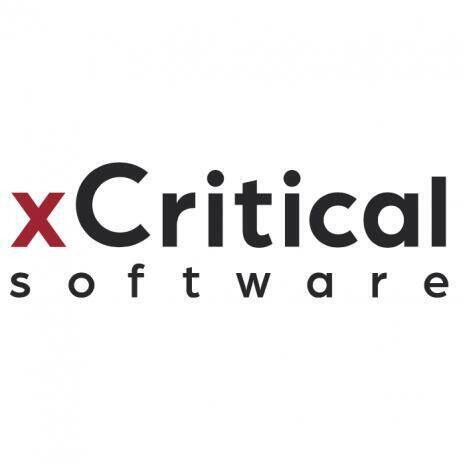Contents:


The ESP32 is even cheaper than the ESP8266, but its capabilities are much greater. The ESP32 has many more GPIOs than the ESP8266, and more analog pins as well. It also has two cores so that you can have one core handle Wi-Fi while the other core handles your application logic.
It also has an embedded Bluetooth v4.2 module that supports Bluetooth Low Energy . In this section, we will compare the peripherals offered by both modules. You will have to sacrifice the power cost for the performance. The ESP32 comes with a 512KB RAM capacity while that of the ESP8266 is limited to 80KB. This means that the ESP32 can handle more tasks and instructions at a shorter time than the ESP8266.
There are several development environments available for both microcontroller boards, including MicroPython, C, and C++. Regardless of your language of choice, there’s likely to be an interpreter for Pico or ESP32 that supports it. Due to its lower power consumption in active modes, the Raspberry Pi Pico is therefore more suitable for simple, low-power projects that will be powered from a battery pack.

Efficiently using its feature of data processing to read both digital and analog signals from sensors. Some other usage is in reading complex calculations of adders or multipliers to any other driver algorithm. It provides you with a faster processor and good memory size, which allow considerable larger projects to be designed on only one SOC. The ESP8266 is a complete or self-contained system on a chip circuit, Wifi module with IP/TCP protocol stack. The ESP8266 gives access to any microcontroller through your Wifi connection. Development & break-out boards extend wiring and may add functionality, often building upon ESP32 module boards and making them easier to use for development purposes .
Advantages of the Microcontrollers
Its job is to initialize the https://traderoom.info/ and load the main application program. One way to protect data and systems is to use strong cryptography. This can be used to encrypt data at rest or in transit (like when it’s being transmitted over a network). They are designed to be used in embedded systems, which are electronics that are built into larger devices or products. Some examples of embedded systems include car engine control units, washing machine controllers, and microwave ovens. It depends on the application and the development team’s expertise.
If you need a more esp32 vs esp8266 memoryful microcontroller for your project, the ESP32 is the better choice. The ESP32 has a built-in real-time clock that can be used to track time even when the power is off. The ESP8266 does not have an RTC and thus cannot be used for applications that require time tracking. In addition, the ESP32 has several built-in peripherals, including a capacitive touch sensor, Hall effect sensor, low-noise amplifier, SD card interface, Ethernet MAC and LCD controller.
In general, SoCs are more powerful but also more expensive. When it comes to choosing between the ESP32 and the ESP8266, sustainability and compatibility are two important factors to consider. The ESP32 is a newer platform that is still being developed, while the ESP8266 has been around for a few years now. This means that the ESP32 may have more features and better support in the future, but the ESP8266 is more widely used and compatible with existing devices right now. The ESP8266 was released in 2014 and quickly became one of the most popular microcontrollers on the market. The ESP32 was released in 2016 and has since become a popular choice for IoT projects.
Programming
And we used to do floating point in Z80 or 6502 asm back in the day, it wasn’t too hard to write yourself once you have a test suite that exercises the corner cases of floating point arithmetic. But I wasn’t able to find numbers and I’m not setup with any RISC-V stuff at the moment to check. My wild guess is 10% to 30% more area, based on intuition and experience and no real data. This means that you can easily control and monitor devices remotely via Wi-Fi or Bluetooth at a very low price. If you’re not sure which one to choose, we recommend starting with the ESP32. It’s a great all-around device that will give you the most flexibility for your project.
In general, CPUs are better suited for applications that require high performance, while microcontrollers are better suited for applications that require low cost and low power consumption. However, there are many applications where either type of device could be used. The choice between a CPU and a microcontroller depends on the specific requirements of the application.
- Then, you just need to add a condition at the beginning of your sketch to check the last lamp state, and turn the lamp on or off accordingly.
- In general, ESP32 devices have more GPIO to work with, making them more useful in complex applications.
- This confirms what we’ve suspected for a while — if you want to save power, your best bet is to keep the chip sleeping as much as possible, and then run it full-out when it needs to run.
It really depends on your project requirements and preferences. If you need Wi-Fi and Bluetooth, then ESP32 is a good choice. If you need low power consumption, then nRF52840 is a good choice. The CC3200 is a Wi-Fi and Bluetooth combo chip that is supported by the SimpleLink™ SDK. It offers developers more flexibility with the types of applications they can develop. The chip also includes an on-chip security encryption module.
thoughts on “Hands-On: The RISC-V ESP32-C3 Will Be Your New ESP8266”
You are a manufacturer building products that will use Wi-Fi modules. These are among the cheapest Wi-Fi microchip or modules that you will find in the market. Dhruv Batra has updated components for the project titled Eye Tracking Wheelchair Attachment V1. Would be interesting to see how the core compares to other chips. For example, the GD32VF103 in the Longan Nano uses the Bumblebee core from Nuclei and Andes .
Raspberry Pi Pico vs. ESP32: Which Microcontroller Is Right for You? – MUO – MakeUseOf
Raspberry Pi Pico vs. ESP32: Which Microcontroller Is Right for You?.
Posted: Tue, 08 Nov 2022 08:00:00 GMT [source]
A microcontroller is an integrated circuit that can be programmed to perform tasks independently of other devices. The Raspberry Pi Pico and the ESP32 are two of the most popular microcontrollers on the market. They are two small, low-power microcontrollers built on 32-bit dual-core CPUs that can be used to control electronics projects.
RTC Slow memory
ESP32 is a more expensive and powerful option, with more RAM and ROM, as well as support for Bluetooth and WiFi. Despite their small size, microcontrollers are quite powerful. They can store and execute complex instructions, and they often have built-in memory and peripherals (like sensors and input/output ports).
System on a chip is a term used to describe integrated circuits that contain all the necessary components for a complete system on a single chip. System on a chip is an integrated circuit that combines all components of a computer or other electronic system into a single chip. If you’re just getting started with microcontrollers, the ESP8266 is the better choice.
RISC-V: Power and Speed
The ESP8266 and ESP32 SoC microcontrollers both provide builders with an Internet communication device, but the ESP32 comes out on top. The Arduino IDE can program the ESP8266 directly, however it is frequently more difficult, whereas the ESP32 is simple to program. The ESP32’s quicker processor and larger memory allow for far larger projects to be created on a single SoC, while the ESP32’s robust security features make it a more secure device.
Unfortunately, this may no longer be the case because some crappy PUYA-branded flash chips don’t exhibit this behavior, and broke compatibility. It has since been deprecated as a result, so you may need to implement it yourself. As another note, there are also I2C and SPI external FRAM, MRAM, and EERAM chips available. I’m no flash expert, but doesn’t NOR flash allow writing single words to an already erased block (in contrast to erasing, which is possible only block-wise)? You could erase the whole flash memory and then slowly write words to it (each word/byte only once) until the memory is full and then erase everything again.
Hands-On: The RISC-V ESP32-C3 Will Be Your New ESP8266 – Hackaday
Hands-On: The RISC-V ESP32-C3 Will Be Your New ESP8266.
Posted: Mon, 08 Feb 2021 08:00:00 GMT [source]
The ESP32 is ideal for complex projects requiring more computational power, while the ESP8266 is a better choice for simple, easy, and cost-effective simple tasks. Ultimately, both boards offer a powerful platform for building IoT projects and allow you to bring your ideas to life effortlessly. Suppose you’re building a smart home system that controls the lighting and temperature in your home using a mobile app. In this case, you need a board with Wi-Fi connectivity, enough GPIOs to connect to a few sensors and actuators, and low power consumption, as the system will run 24/7.

By following these best practices, you can help to ensure that your microcontroller-based system is as secure as possible. If the team is already familiar with ARM architecture, then using an SoC may be the best option. The ESP32 has a built-in Ethernet MAC that can be used to connect to an Ethernet network. The ESP8266 does not have a built-in Ethernet MAC and thus cannot be used with an Ethernet network.
It includes 400 KiB of SRAM and 384 KiB ROM storage space built in. With earlier ESP-xx modules, these two items (the USB-to-serial adapter and the regulator) had to be purchased separately and be wired into the ESP-xx circuit. Modern ESP8266 boards like the NodeMCU are easier to work with and offer more GPIO pins. Most of the boards listed here are based on the ESP-12E module, but new modules are being introduced seemingly every few months. ESP32 devices have more GPIO to work with more useable and complicated projects. It is a better suited for every situation where an application needs a microcontroller.
With the same functionality, the ESP8285 chip has a 1MB program memory operating in DUOT mode. Recently, the use of the updated Wi-Fi module ESP8266, version ESP-01S (based on the ESP8266EX chip with a built-in TCP/IP protocol stack and AT command management), has become very popular. The chip is designed for use in smart outlets, mesh networks, IP cameras, wireless sensors, wearable electronics, and so on.
